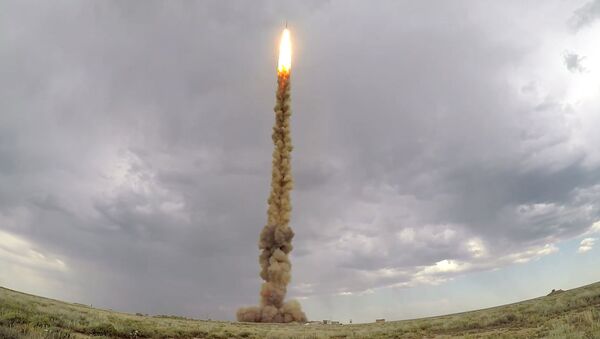At a briefing in October, wing commanders who report to the USAF’s recently-formed 16th unit specifically discussed “a typical Air Force challenge: how to defeat Russian integrated air defence systems (IADS)”, reporter Mark Pomerleau said in a piece published by the website c4isrnet.
According to him, the scenario is comprised of several stages, including the first one, which stipulates that the USAF’s 70th Intelligence, Surveillance and Reconnaissance (ISR) Wing alongside Cyber Command and the National Security Agency (NSA) gathers global intelligence, surveillance and reconnaissance data to “know how the Russian defence systems communicate, how they’re used and where they’re located”.
After that, the 363rd ISR Wing would deal with “how to exploit the Russian systems and how those systems can harm friendly forces”.
It would be followed by the 9th Reconnaissance Wing, which is equipped with the U-2 spy plane, developing a new electronic warfare suite against IADS.
“Another group, the 480th ISR Wing, which provides capabilities for the Air Force Distributed Common Ground System (DCGS) — a global intelligence dissemination platform — has a team dedicated solely to IADS,” Pomerleau notes.
During the final stage, the 55th Wing, responsible for airborne ISR and electronic warfare as well as signals intelligence, would help rebuild offensive, defensive and sensing capabilities which “have atrophied over the years”, according to Pomerleau, who added that “on the electronic support side, the service will need help from the NSA”.
Pomerlau cited General David Goldfein, the USAF’s Chief of Staff, as saying during the briefing that the 16th Air Force could become a de-escalation mechanism that can help prevent a potential conflict.
“We’re prepared to fight if called upon, but we prefer not to fight. If there’s a way for de-escalation, absolutely,” Goldfein underscored.
NATO Should Focus on Seizing Kaliningrad Within Two Weeks, US Think Tank Says
His remarks come after Richard Hooker of the Jamestown Foundation, a US think tank, claimed in a report that during a “hypothetical” scenario of a NATO armed conflict with Russia in the Baltic Sea region, the alliance should specifically focus on seizing the Russian enclave of Kaliningrad within at least two weeks.
“[…] It is imperative that 1) NATO forces overcome the Kaliningrad air-defence bastion within 14 days to bring the alliance’s airpower advantages into play; 2) in-place forces and rapidly arriving reinforcements hold out for 30 days; and 3) heavy reinforcements arrive in strength and enter the fight not later than 30 days after the commencement of hostilities. Today, NATO is not prepared to accomplish any of these objectives,” Hooker asserted.
At the same time, he did not elaborate on what could provoke the armed conflict, simply claiming that Moscow has plans pertaining to the Baltic region.
This followed reports that the Pentagon works out plans to potentially breach the Kaliningrad region's air defence.
The outlet Breaking Defence which quoted the Commander of the US Air Forces in Europe and Africa, Gen. Jeffrey Lee Harrigian, as saying that “if that would ever come to fruition, we’d be ready to execute”.
Commenting on the matter, Kremlin spokesman Dmitry Peskov assured that all Russian regions are properly protected. Russia’s Foreign Ministry spokeswoman Maria Zakharova, for her part, slammed the Pentagon's plan as “irresponsible”, adding that Moscow sees it as a threat.




